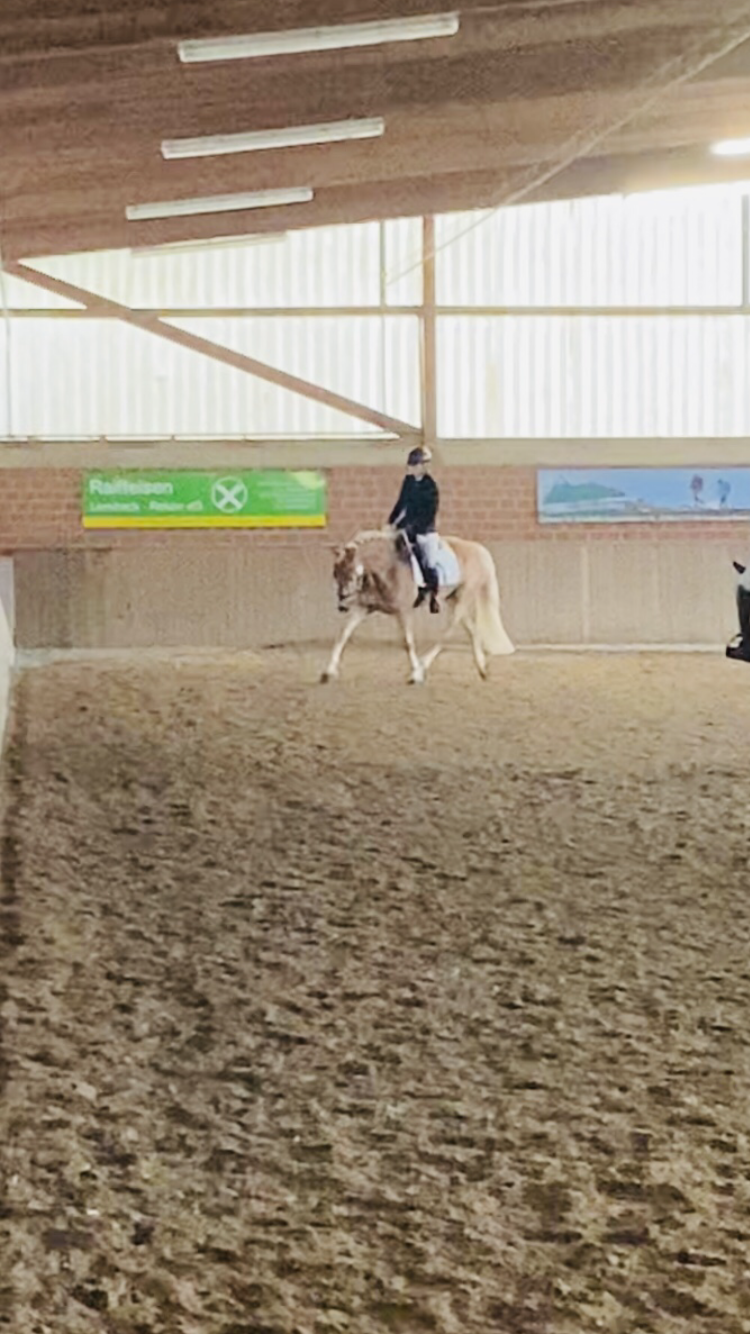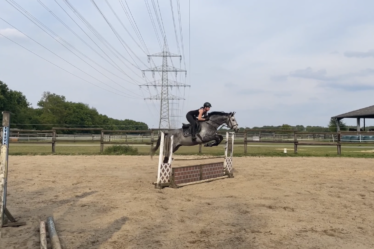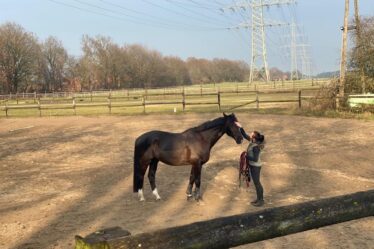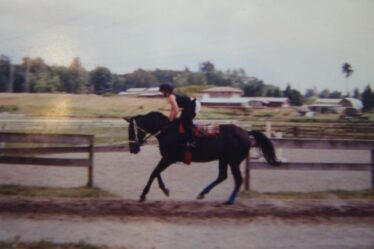
Whether you’re heading into a lesson, a show test, or a simple schooling session, the quality of your ride often mirrors the quality of your warm-up. Taking a methodical approach—focusing first on rhythm, connection, and relaxation, the foundational elements of the training scale—is key. A purposeful warm-up helps both horse and rider find their balance and establish clear lines of communication before moving on to more demanding work. This becomes even more crucial in a show environment, where nerves and pressure can easily disrupt focus. In those moments, a calm, structured warm-up not only helps the horse settle but also allows the rider to center themselves, setting the stage for a confident and harmonious performance.
Always give yourself plenty of time to let your horse warm up at their own pace. I typically set aside about an hour to tack up, make my way to the warm-up ring, and go through the warm-up itself. Rushing this process almost always creates unnecessary tension—for both horse and rider. For younger horses or those prone to nerves, I like to add an extra 15 minutes for some light groundwork before getting on—just enough to help them settle.
Starting with familiar groundwork is very useful in relaxing young and tense horses. It allows me to improve my horse’s breathing and concentration, engage their body, and release any initial tension. Groundwork also provides an opportunity to assess their mindset before getting in the saddle. By establishing a calm and steady connection on the ground, I can ensure a smoother transition into warming up under saddle.
As I begin riding, my focus is on helping the horse relax into the stretch. Whether working with a seasoned competitor or a young horse, relaxation is fundamental to a successful warm-up. I use large bending lines and frequently change direction to soften the horse’s body. This shift in balance and bend encourages them to open through their ribcage, breathe deeply, and release any tension in the back and neck.
Bending around the inside leg helps bring the inside hind leg under the center of gravity, which relieves tension in the pelvis and promotes a natural, forward-down stretch. It’s important to maintain connection from the back to the front, especially during long-and-low stretches, ensuring that the horse stretches in a relaxed, natural way rather than being forced.
Patience is a key in any effective warm-up. Don’t worry if your horse takes a bit longer to settle—some horses need more time to relax than others. Continue to keep them moving, change hands often, and encourage the bend through their body. Variation helps keep them mentally engaged and prevents them from becoming too fixated or stuck in one position.
Once I feel my horse has found their rhythm, I like to introduce transitions. Wether it’s walk to trot, trot to canter, or changes within the trot or canter, transitions help bring the horse “onto the aids,” improving their responsiveness and engagement of the hindquarters. This creates a stronger connection through both the seat and reins, setting the foundation for a more responsive ride in the ring.
The Warm-Up Isn’t a Training Session
It’s meant to prepare your horse for the competition, not to drill them into exhaustion. You don’t need to school fences or ride every movement you plan to perform in the ring incessantly. The purpose is to get your horse in the right mental and physical state to perform at their best. Overworking them in the warm-up will only leave them tired and frustrated when it’s time to go into the ring.
This warm-up routine has become a reliable framework for my horses—whether I’m riding at home, attending a clinic, or competing at a show. Focusing on relaxation, rhythm, and building trust establishes a routine that both you and your horse can rely on, allowing them to settle faster. A consistent, calm warm-up creates a sense of confidence, allowing both horse and rider to approach the ring with a positive mindset.


